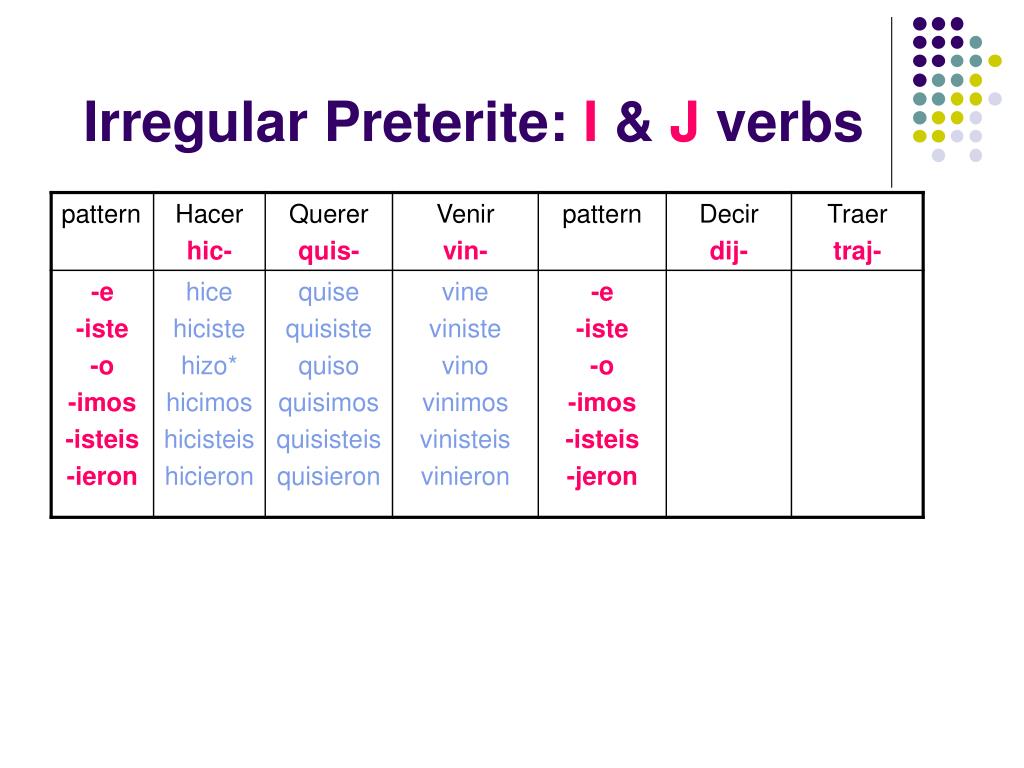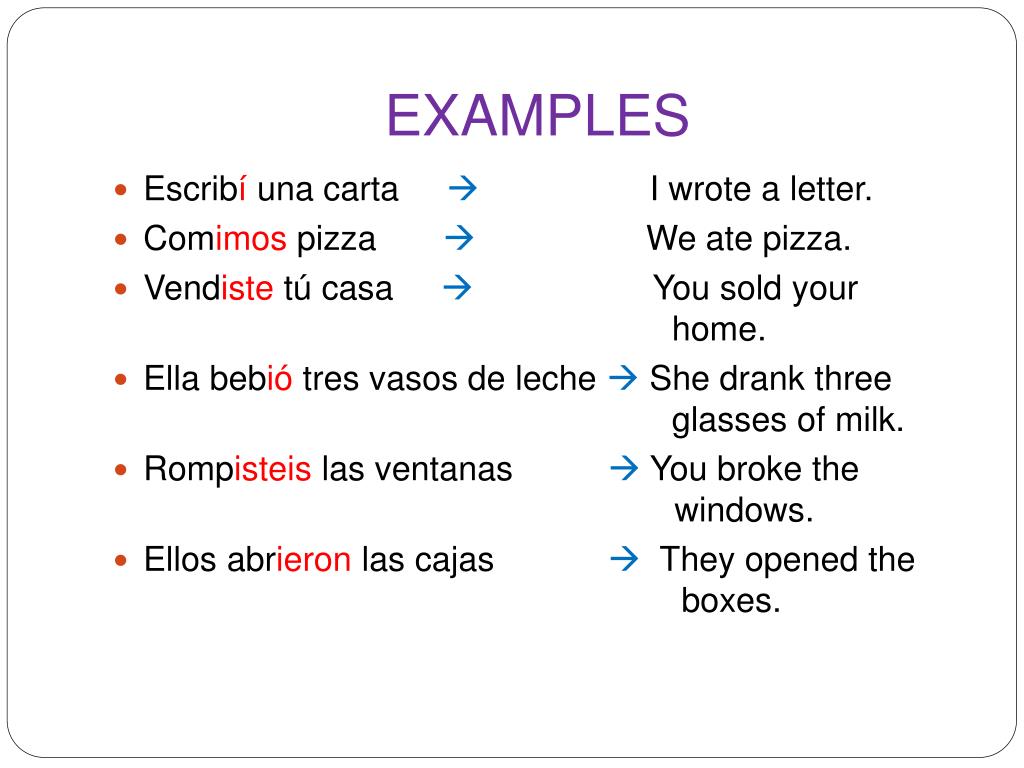

| My brothers were going (on their way) but the car broke down on the way.

This verb is never followed directly by a noun, it is always followed by a preposition which attaches it to the noun. What have you noticed so far about sentences using the verb ir?
#PRETERITE ENDINGS IR HOW TO#
| When he came I had already gone.įor an explanation on this structure, see our article on how to use haber. Participle: ido (gone)Įxample: Cuando él vino yo ya había ido. See more on how to use the gerund in our estar conjugation guide. | I spend a lot of time dancing, drinking and going shopping. Gerund: yendo (going)Įxample: Paso mucho tiempo bailando, bebiendo, y yendo de compras. | I like to go to the market every Saturday. Infinitive: ir (to go)Įxample: Me gusta ir al mercado todos los sábados. They need to go with another verb which is conjugated in order to be used in a sentence. Verbals are the un-conjugated forms of the verb. Lucky for you, this article breaks them all down for you! Verbals of ir Be aware that ir is highly irregular, so it pays to spend time studying the various conjugations. So it goes without saying that knowing which form of it to use when is essential to speaking Spanish well.

Ir, meaning “to go”, is one of the top 10 most frequently used verbs in Spanish. If that doesn’t highlight to you the importance of this verb, I don’t know what to tell you. They change e:i and o:u in the third person, singular and plural.Have you ever heard the Spanish expression “ me voy a ir yendo”? This is a very common, perfectly grammatical statement with not one, not two, but three different forms of ir conjugation. ir verbs that change their stem in the present tense do change in the preterite, but in a different way. They are conjugated just like other regular preterite verbs. ar and -er verbs that change their stem in the present tense do not change in the preterite. Subjunctive VIII: Actions not yet completed Subjunctive III: Verbs that change orthographically Subjunctive II: Conjugating regular and stem-changing verbs


 0 kommentar(er)
0 kommentar(er)
